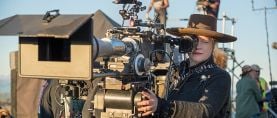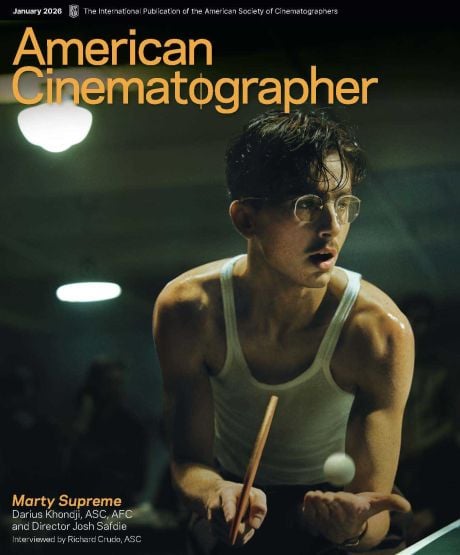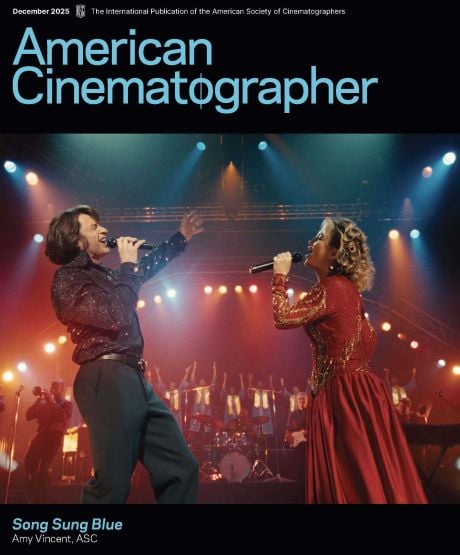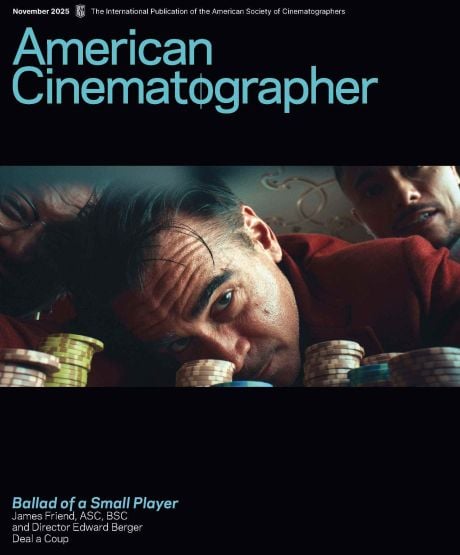
Academy Software Foundation Spotlights ACES at Siggraph 2025
At the computer-graphics conference's 2025 edition, ASWF held a series of talks that explored enhancements introduced by ACES 2.0 and recent use cases of the color-management system, as well as a new Machine Learning Working Group.
The Academy Software Foundation (ASWF) — a joint venture of the Academy of Motion Picture Arts and Sciences and the Linux Foundation aimed at open source software development — recently held a program dubbed Open Source Days during the Siggraph computer-graphics conference in Vancouver, with highlights including the latest Academy Color Encoding System (ACES) developments and the launch of its new Machine Learning Working Group.
The well-attended event (more than 500 participants) underscored the importance of open-source projects. David Morin, executive director of the ASWF (and co-chair of the ASC's MITC Strategic Planning Steering Committee) explained that open-source work is a priority because entertainment companies have very specific, and similar, needs, but also limited resources — so, the goal is to work together on a common infrastructure, while freeing engineering resources to work on each studios’ bespoke creative tools.

The Foundation is currently the home to projects including OpenColorIO, OpenEXR and OpenImageIO. And now, this includes ACES, which was developed and maintained by the Academy of Motion Picture Arts and Sciences since its 2015 launch.
“Today, ACES is everywhere,” said Alex Forsythe, senior director of science and technology at the Academy of Motion Picture Arts and Sciences, who led a presentation about the open-source framework for color management and image interchange. The release of ACES 2.0 this past spring introduced enhancements including improved color rendering, more consistent display across different dynamic ranges, better transform invertibility, and expanded support for custom output devices.

Forsythe related that with ACES 2.0, “the time was right to join the ASWF [with its] expanded community and a sustainable structure for continued development and maintenance.”
Providing examples of ACES in use, Jeff Budsburg, a VFX supervisor at Dreamworks Animation, joined the presentation to describe how ACES was used on The Wild Robot, enabling a wild color gamut and easing interchange of data throughout the animation pipeline. Netflix imaging technologist Francesco “Frankie” Giardiello also reported that when the streaming service launched its Content Hub Media Production Suite, “ACES was the backbone.”
“ACES started as a shared concern,” Forsythe said, saluting the “hundreds of contributors and thousands of users.” He summed up, “Your work has been transformative. We’re just getting started. On behalf of the Academy, thank you. And the journey continues.”
Machine Learning
The new ML Working Group provides a space for participants to meet and share expertise, and where helpful, spin off and guide related open source projects aimed at addressing specific needs of film pipelines.
It launches with a pair of projects. The first is work to develop a new tool dubbed Dailies Notes Assistant, aimed at streamlining the dailies process by transcribing dailies meetings, analyzing the content using a large language model (LLM), and integrating notes directly into Shotgrid for production tracking.
The system is not being developed to select takes or take creative decision making away, but was instead described as a tool to essentially streamline communication. Development of this tool is currently led by Industrial Light & Magic and Imageworks, with participation from DreamWorks Animation, Framestore and Autodesk.
The second ML Working Group project is the Rongotai Model Train Club (RMTC), which began as an internal project at Wētā FX. To make it easier for artists and technical directors to create models and employ ML for niche production problems, RMTC aims to provide a VFX-specific framework for simplifying the production and deployment of ML models and datasets by clearly tracking their provenance and ensuring connection to rights holders.
Said Wētā FX CTO Kimball Thurston, “We hope it helps the community with a common mechanism to integrate ML/AI systems with VFX data formats and concepts, but at the same time, track usage and ensure data and the subsequent models are not used in the wrong context. Looking forward, we hope RMTC provides a vehicle to assist content creators and owners in managing and reporting how AI is involved in the creative process, as well as a bridge between separate dataset provider and content delivery efforts.”
The Academy Software Foundation continues to grow. During Open Source Days at Siggraph, the Foundation welcomed its newest premier members: Laika, the feature film animation studio known for films such as Coraline, ParaNorman and Kubo and the Two Strings; and Skydance Animation, the studio behind animated features Luck and Spellbound with upcoming releases including Brad Bird’s Ray Gunn.
SciTech Watch
In related news, the Academy has announced that six scientific and technical investigations have been launched in advance of the 2026 SciTech Awards.
They are: small pyrotechnic devices that are safe to use in proximity to cast and crew, layered shading systems for CGI, software suites for stop-motion photography, systems for custom art styles in animated features, automated speech restoration tools, and conform management and sound auto-assembly software. The deadline to submit additional entries is September 8, at 5 pm pst.
Images courtesy of The Academy.






